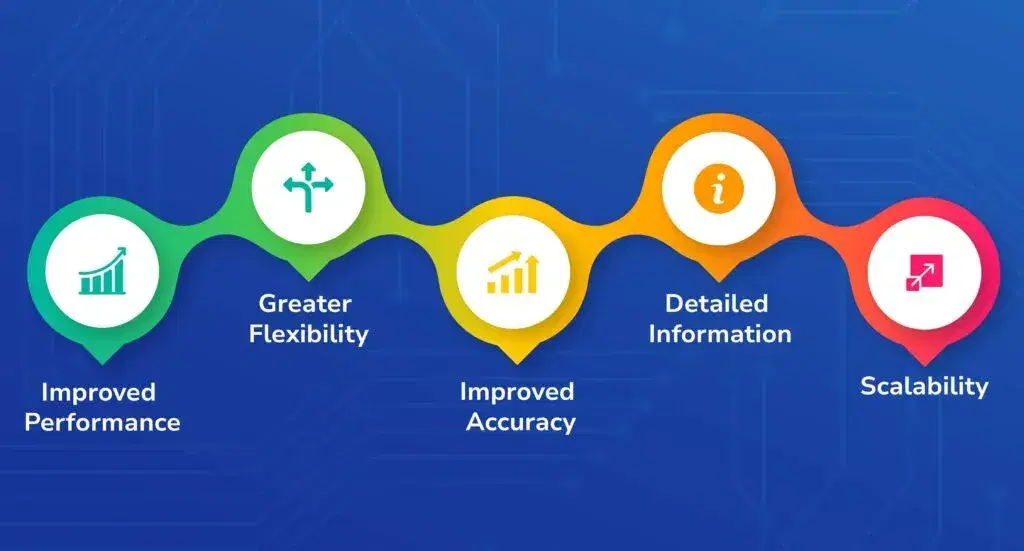Introduction
What is Advanced Data Modeling?
What are the Benefits of Using Advanced Data Modeling Techniques in Power BI?

- Improved Performance: Efficient models reduce processing time and improve the responsiveness of Power BI dashboards.
- Greater Flexibility: Advanced models are designed to adapt changes more frequently than traditional models. They can easily change as per your business requirements and data sources.
- Improved Accuracy: These models effectively manage and update data by effectively reducing mistakes and providing the assurance of consistency across reports.
- Detailed Information: Advanced modeling allows you to explore complicated relationships and patterns. That will work far better than basic modeling.
- Scalability: You cannot refuse the fact that business data grows along with time. Advanced models are proven for flexibly scaling to effectively manage increased data loads without affecting performance.

What are the Steps of Advanced Data Modeling Techniques in Power BI?

- Define the Business Requirements: The first step of this process is to clearly identify your business target. This identification will help to prepare effectively strategies to achieve it with the conceptual data model. If you are looking to analyze future trends, analyze current patterns, or get the latest updates into daily operation, then it becomes necessary to identify these objectives early. It will guide you through the entire modeling process.
- Data Collection and Preparation: Once your goals are defined your next step would be to collect necessary data from different sources. This step is very important for this process, and it includes the cleansing of data to remove mistakes and inconsistencies. It is also required to fill in missing values. Data Collection and preparation helps ensure all data is available in a usable format. It also ensures that the model you are building is both accurate and reliable.
- Designing the Model: Now you have collected data with all required preparations. Now you need to start the structuring process of your model with ready data. In Power BI, this includes some necessary tasks, for example, creating tables and setting up relationships between them. Power BI’s intuitive interface helps you with easy to use drag and drop elements to build your model efficiently. It also allows you to use DAX. DAX is Power BI’s formula language that is used to define more complicated relationships and calculations.
- Developing Calculations and Measures: At this step by using DAX, you can develop effective formulas for your specific business requirements and logic. This process sometimes includes calculations for sales forecasts, financial summaries, and customer behavior analytics. These measures are required for turning raw data into meaningful information to make informed business decisions.
- Optimization and Performance Tuning: After setting up your model and calculations, it becomes important to make sure that models perform properly. This includes the procedure of optimizing your DAX expressions for speed and efficiency. Also managing how data is refreshed within your model is part of this process. Efficient performance is key to ensure that end-users can access information quickly and reliably.
- Validation and Deployment: The last step of creating advanced data modeling techniques in Power BI is to test your data model. Now get engaged with end-users as they will interact with the model. Your interaction will make sure that data models meet their needs and are easy to use. After strict testing, you can deploy the model within the Power BI service. This will make it accessible to all relevant parties in the organization.













